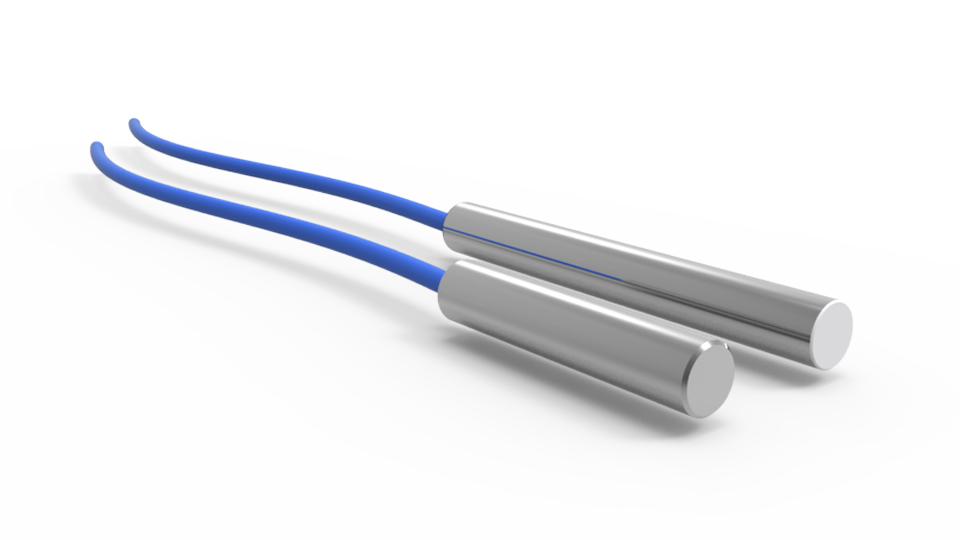Temperaturaufnehmer
Temperatursensoren sind in der geotechnischen- und der Bauwerksmonitoring (SHM) aus mehreren Gründen wichtig:
- Wärmeausdehnung: Temperaturänderungen führen dazu, dass sich Materialien ausdehnen oder zusammenziehen. In Bauwerken und geotechnischen Systemen wie Brücken, Dämmen oder Tunneln können Temperaturschwankungen zu einer erheblichen Ausdehnung oder Kontraktion der verwendeten Materialien führen.
- Materialeigenschaften: Die Temperatur beeinflusst die mechanischen Eigenschaften von Materialien. Beispielsweise können die Festigkeit und Steifigkeit von Beton, Stahl oder Boden mit der Temperatur variieren.
- Temperaturgradienten: Temperaturunterschiede innerhalb einer Struktur oder eines geotechnischen Systems können Temperaturgradienten erzeugen, die innere Spannungen induzieren können. Diese Spannungen können zu Verformungen, Rissen oder struktureller Instabilität führen.
Temperatursensoren sind in einer robusten, wasserdichten Hülse untergebracht, um direkt in Beton oder unter rauen Umgebungsbedingungen installiert zu werden. Je nach Anforderung stehen verschiedene Messtechnologien zur Auswahl: Platin-Widerstände (PT-100) oder Thermistorsensoren (NTC). Die PT-Technologie wird empfohlen, wenn eine hohe Genauigkeit erforderlich ist, während Thermistoren die Kompromisslösung zwischen Kosten und Leistung darstellen.
Temperaturketten mit bis zu 16 Messpunkten sind für die Überwachung von Temperaturprofilen von Bohrlöchern (z. B. bei Vereisungsprojekten), die Überwachung der Abbindetemperatur großer Betonmassen, die Überwachung von Permafrost in Erdrutschen und andere Anwendungen erhältlich.

